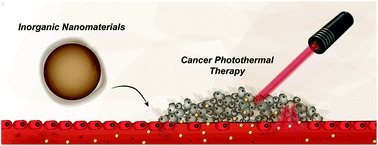Overview of the application of inorganic nanomaterials in cancer photothermal therapy
Abstract
Cancer photothermal therapy (PTT) has captured the attention of researchers worldwide due to its localized and trigger-activated therapeutic effect. In this field, nanomaterials capable of converting the energy of the irradiation light into heat have been showing promising results in several pre-clinical and clinical assays. Such a therapeutic modality takes advantage of the innate capacity of nanomaterials to accumulate in the tumor tissue and their capacity to interact with NIR laser irradiation to exert a therapeutic effect. Therefore, several nanostructures composed of different materials and organizations for mediating a photothermal effect have been developed. In this review, the most common inorganic nanomaterials, such as gold, carbon-based materials, tungsten, copper, molybdenum, and iron oxide, which have been explored for mediating a tumor-localized photothermal effect, are summarized. Moreover, the physicochemical parameters of nanoparticles that influence the PTT effectiveness are discussed and the recent clinical advances involving inorganic nanomaterial-mediated cancer photothermal therapy are also presented.

- This article is part of the themed collection: Biomaterials Science Most Popular 2020


 Please wait while we load your content...
Please wait while we load your content...